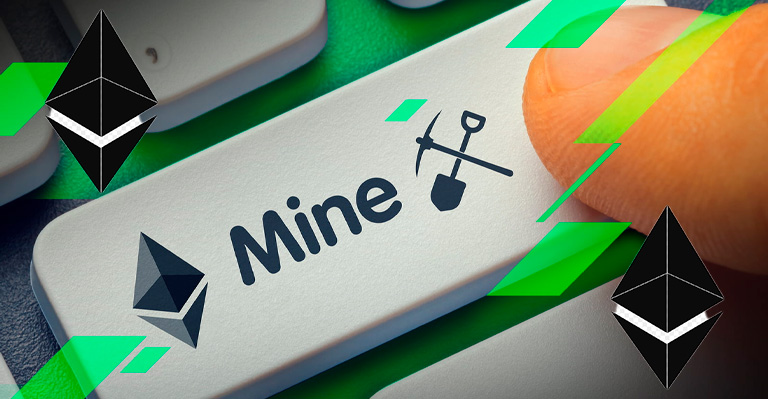Ethereum relies on mining to increase its circulating supply of coins. The process involves participants, called miners, who use the Proof of Work (PoW) method to create a new block by finding solutions to complex mathematical problems. However, Ethereum 2.0 made the switch to Proof of Stake (PoS) in 2022. The miner who solves each problem first gets rewarded for generating the new block.
The process of creating new coins on the Ethereum network requires the validation of each block by other nodes. This ensures the security and integrity of the blockchain. You have two options for participating in this process: staking or pool mining. This guide will show you how to optimize your mining strategy for maximum profitability.
What is Ethereum Mining?
The process of creating new blocks on the Ethereum network is done by miners, who receive a reward of 2 ETH plus gas for each block they produce. The average time between blocks is about 15 seconds, which ensures a fast and secure ledger update. Miners can also earn a bonus for validating transactions and maintaining the network’s security.
A miner who finds a valid solution to a mathematical challenge announces it to the rest of the network. The network participants then validate the solution and reach a consensus. If the majority (more than 50%) of them accept the solution as correct, the block containing the solution is appended to the blockchain. The miners then move on to a new challenge, and the cycle repeats.

Why Ethereum Miners are Important
As we explained in the previous section, Ethereum mining is the process of validating transactions and securing the network. This is especially important to prevent a common issue in decentralized systems: double spending.
Double spending occurs when some actors exploit the network’s vulnerabilities to duplicate transactions. This undermines the trust and value of cryptocurrency. That’s why Ethereum mining is essential for the network’s health and stability.
Blockchain technology uses a system of linked blocks that have unique identifiers (hashes) and timestamps. These blocks also reference the previous block’s timestamp and hash, making it impossible to alter the order or time of transactions.
The hashrate is a measure of the computing power of the Ethereum network. The more miners join the network, the higher its hashrate becomes. This enhances the network’s security, as more participants are needed to validate transactions and make important decisions regarding the network’s governance and maintenance.
The security and growth of the Ethereum network rely on the work of miners who create new blocks for its blockchain. Miners deserve to receive block rewards, incentives, and other benefits for their contribution.
Ethereum Mining Limitations
ETH has a predetermined supply schedule that adds two new coins to the circulation for every block created on the network. The supply is independent of the number of users, transactions, or market price.
This could lead to ETH becoming an inflationary currency if the supply exceeds the demand. However, the current low issuance rate of 2 ETH/block may reduce this possibility.
The amount of ETH that is created for each new block on the Ethereum network has been changing over time. In 2017, the block reward was 5 ETH, but in 2019, it was reduced to 3 ETH, and in 2023 it was further reduced to 2 ETH. This shows that the supply of ETH is not constant, but rather decreasing gradually.
Unlike Bitcoin, which has a fixed number of coins, ETH has a yearly supply limit of 18 million ETH. This makes it similar to fiat currency, which can be issued by governments. However, this also means that ETH may face inflation if the supply does not match the global economic conditions.
To avoid this, ETH introduced a fee-burning mechanism in July 2021 that reduces the number of coins in circulation.
Ethereum made the from a Proof of Work (PoW) to a Proof of Stake (PoS), a consensus mechanism that is cheaper and greener.
This change will lower the annual inflation rate from around 5% to less than 1% starting in 2022. This means that the total supply of ETH will not increase much under the new system, which could boost the value of ETH as the mining difficulty rises.

Types Of Ethereum Mining
Pool Mining
Mining pools are groups of miners who share their computing power to mine Ethereum more efficiently. They have a higher chance of finding blocks and earning mining rewards (ETH) than solo miners. The pool members split the rewards according to their contributions.
How to Stake Ethereum
Ethereum staking is a process that allows users to earn rewards by locking up their ETH and validating transactions on the network. There are different ways to stake ETH, depending on the user’s preferences and capabilities. Some of these ways are more secure, decentralized, and profitable than others.
Some of these ways also require more technical skills, hardware, and trust from the user. For users who prefer convenience and simplicity, some services let them stake ETH without running their own node or holding their own keys. One of these services is Coinbase, a popular exchange that has a staking program for Ethereum. Another option is Ledger, a hardware wallet that supports Ethereum staking.

What You Need to Begin Staking
Staking Ethereum (ETH) is a way to earn rewards and support the network at the same time. You have different options for staking ETH, depending on how much control and responsibility you want to have.
One option is to stake ETH by yourself, which means you need to set up your own staking node and run the software on your own hardware. This way, you don’t have to share any personal data with a third-party service provider.
If you don’t want to stake your coins by yourself, you can also choose to outsource the staking operation to a professional service provider, who will stake on your behalf and share the rewards with you. This is called staking-as-a-service (SAAS) or pooled staking, and it can save you the time and hassle of running your own node and securing your coins.
This way, you don’t have to worry about running your own node or hardware. However, you will usually need to create an account with the service provider, which may require you to provide personal information or have a minimum balance.
Conclusion
One of the benefits of the Ethereum network is its high level of security, which is achieved by using a PoS consensus mechanism that rewards validators for acting honestly and penalizes them for acting maliciously. However, staking also involves some risks, such as the potential of slashing or losing some of your staked ETH if you violate the protocol rules.

